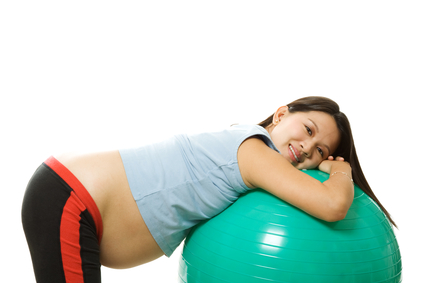Why Can’t I Simply Lose a Few Pounds? 5 Dieting Myths & Gender Differences
Despite their apparent leanness, too many active people are discontent with their body fat. All too often, I hear seemingly lean athletes express extreme frustration with their inability to lose undesired bumps and bulges:
- Am I the only runner who has ever gained weight when training for a marathon???
- Why does my husband lose weight when he starts going to the gym and I don’t?
- For all the exercise I do, I should be pencil-thin. Why can’t I simply lose a few pounds?
Clearly, weight loss is not simple and often includes debunking a few myths. Perhaps this article will offer some insights that will lead to success with your weight loss efforts.
MYTHS: You must exercise in order to lose body fat.
To lose body fat, you must create a calorie deficit. You can create that deficit by
1) exercising, which improves your overall health and fitness, or
2) eating fewer calories.
Even injured athletes can lose fat, despite a lack of exercise. The complaint, I gained weight when I was injured because I couldn’t exercise” could more correctly be stated, I gained weight because I mindlessly overate for comfort and fun.
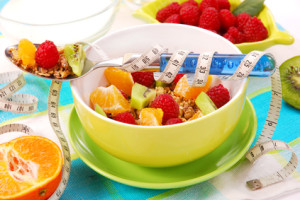 Adding on exercise does not equate to losing body fat. In a 16-week study, untrained women (ages 18 to 34) built up to 40 minutes of hard cardio or weight lifting three days a week. They were told to not change their diet, and they saw no changes in body fatness.(1) Creating a calorie deficit by eating less food seems to be more effective than simply adding on exercise to try to lose weight.
Adding on exercise does not equate to losing body fat. In a 16-week study, untrained women (ages 18 to 34) built up to 40 minutes of hard cardio or weight lifting three days a week. They were told to not change their diet, and they saw no changes in body fatness.(1) Creating a calorie deficit by eating less food seems to be more effective than simply adding on exercise to try to lose weight.
Athletes who complain they “eat like a bird” but fail to lose body fat may simply be under-reporting their food intake. A survey of female marathoners indicated the fatter runners under-reported their food intake more than the leaner ones. Were they oblivious to how much they actually consumed?(2) Or were they too sedentary in the non-exercise hours of their day?
 MYTH: If you train for a marathon or triathlon, surely your body fat will melt away.
MYTH: If you train for a marathon or triathlon, surely your body fat will melt away.
Wishful thinking. If you are an endurance athlete who complains, For all the exercise I do, I should be pencil-thin, take a look at your 24-hour energy expenditure. Do you put most of your energy into exercising, but then tend to be quite sedentary the rest of the day as you recover from your tough workouts? Male endurance athletes who reported a seemingly low calorie intake did less spontaneous activity than their peers in the non-exercise parts of their day.(4) You need to keep taking the stairs instead of the elevators, no matter how much you train. Again, you should eat according to your whole day’s activity level, not according to how hard you trained that day.
MYTH: The more you exercise, the more fat you will lose.
Often, the more you exercise, the hungrier you get and 1) the more you will eat, or 2) the more you believe you “deserve” to eat for having survived the killer workout. Unfortunately, rewarding yourself with a 600-calorie cinnamon roll can quickly erase in a few minutes the 600-calorie deficit you generated during your workout.
The effects of exercise on weight loss are complex and unclear—and depend on the 24-hour picture. We know among people (ages 56-78) who participated in a vigorous walking program, their daily energy needs remained about the same despite adding an hour of exercise. How could that be? The participants napped more and were 62% less active the rest of their day.(3) Be sure to pay attention to your whole day’s activity level. One hour of exercise does not compensate for a sedentary lifestyle
MYTH: You should exercise six days a week to lose weight.
Research suggests exercising four times a week might be better for weight control than six times a week. A study with sedentary women (ages 60 to 74) who built up to exercising for 40 minutes of cardio and weights suggests those who did four workouts a week burned about 225 additional calories in the other parts of their day because they felt energized. The group that trained six times a week complained the workouts not only took up too much time, but also left them feeling tired and droopy. They burned about 200 fewer calories in the non-exercise parts of their day.(5) Yes, they were ages 60 to 74, but the info might also relate to you?
MYTH: Couples who exercise together, lose fat together.
Not always. In a 16-month study  looking at exercise for weight loss, the men lost 11.5 pounds and the women maintained weight, even though they did the same amount of exercise.(6) In another study, men who did an 18-month marathon training program reported eating about 500 more calories per day and lost about five pounds of fat. The women reported eating only 60 more calories, despite having added on 50 miles per week of running. They lost only two pounds.(7)
looking at exercise for weight loss, the men lost 11.5 pounds and the women maintained weight, even though they did the same amount of exercise.(6) In another study, men who did an 18-month marathon training program reported eating about 500 more calories per day and lost about five pounds of fat. The women reported eating only 60 more calories, despite having added on 50 miles per week of running. They lost only two pounds.(7)
What’s going on here? Well, a husband who adds on exercise will lose more weight than his wife if he’s heftier and thereby burns more calories during the same workout. But, speaking in terms of evolution, Nature seems protective of women’s role as child bearer, and wants women to maintain adequate body fat for nourishing healthy babies. Hence, women are more energy efficient. Obesity researchers at NY’s Columbia University suggest a pound of weight loss in men equates to a deficit of about 2,500 calories, while women need a 3,500-calorie deficit.(8) No wonder women have a tougher time losing weight then do men https://thefitnessequation.com/phentermine-online/….
The bottom line
If you are exercising to lose weight, I encourage you to separate exercise and weight. Yes, you should exercise for health, fitness, stress relief, and most importantly, for enjoyment. (After all, the E in exercise stands for enjoyment!) If you exercise primarily to burn off calories, exercise will become punishment for having excess body fat. You’ll eventually quit exercising—and that’s a bad idea.
Instead of focusing on exercise as the key to fat loss, pay more attention to your calorie intake. Knocking off just 100 calories a day from your evening snacks can theoretically result in 10 pounds a year of fat loss. One less cookie a day seems simpler than hours of sweating…?
From The Athlete’s Kitchen
Copyright: Nancy Clark, MS, RD March 2013
Nancy Clark MS RD CSSD (Board Certified Specialist in Sports Dietetics) counsels casual and competitive athletes in her private practice in the Boston-area (617-795-1875). Her Sports Nutrition Guidebook, Food Guide for Marathoners and Cyclist’s Food Guide all offer additional weight management information. The books are available via www.nancyclarkrd.com. See also www.sportsnutritionworkshop.com.
References:




 • Water is the solvent for biochemical reactions. Your body cannot function without sufficient water, as noted by the fact that athletes die from dehydration.
• Water is the solvent for biochemical reactions. Your body cannot function without sufficient water, as noted by the fact that athletes die from dehydration. • Coffee is a popular source of water. Although once thought to have a diuretic effect, current research indicates coffee (in amounts normally consumed) hydrates as well as water over a 24-hour period. That is, after drinking coffee, you may urinate sooner, but you will not urinate more than you consume. Army research on caffeine and dehydration confirms coffee is an acceptable source of fluids for athletes, even during exercise in the heat. Hence, coffee and other caffeinated beverages such as tea or cola count towards your water intake.
• Coffee is a popular source of water. Although once thought to have a diuretic effect, current research indicates coffee (in amounts normally consumed) hydrates as well as water over a 24-hour period. That is, after drinking coffee, you may urinate sooner, but you will not urinate more than you consume. Army research on caffeine and dehydration confirms coffee is an acceptable source of fluids for athletes, even during exercise in the heat. Hence, coffee and other caffeinated beverages such as tea or cola count towards your water intake. st athletes who lose more than 2% of their body weight (3 lbs for a 150-pound athlete) lose both their mental edge and their ability to perform optimally in hot weather. Yet, during cold weather, you are less likely to experience reduced performance, even at 3% dehydration. Three to 5% dehydration does not seem to affect muscle strength or performance during short intense bouts of anaerobic exercise, such as weight lifting. But distance runners slow their pace by ~2% for each percent body weight lost by dehydration. That means, if you weigh 150 pounds and lose 3 pounds sweat (2% dehydration), your 8-minute mile slows to an 8:19 pace. That’s preventable!
st athletes who lose more than 2% of their body weight (3 lbs for a 150-pound athlete) lose both their mental edge and their ability to perform optimally in hot weather. Yet, during cold weather, you are less likely to experience reduced performance, even at 3% dehydration. Three to 5% dehydration does not seem to affect muscle strength or performance during short intense bouts of anaerobic exercise, such as weight lifting. But distance runners slow their pace by ~2% for each percent body weight lost by dehydration. That means, if you weigh 150 pounds and lose 3 pounds sweat (2% dehydration), your 8-minute mile slows to an 8:19 pace. That’s preventable!
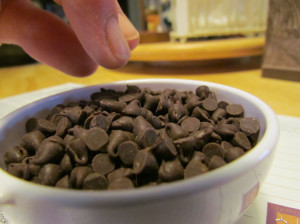
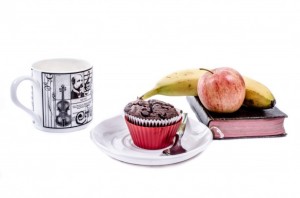
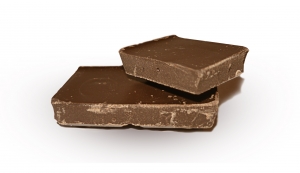 However, less-processed dark chocolate can be considered a healthier choice. Chocolate is made from cocoa, a plant that is a rich source of health-protective phytochemicals (just like you’d get from fruits, vegetables, and whole grains). Two tablespoons natural cocoa power (the kind used in baking) offers the antioxidant power of 3/4 cup blueberries or 1.5 glasses red wine. Unfortunately, dark chocolate has a slightly bitter taste and most people prefer the sweeter milk chocolate, a poorer source of phytochemicals. (We need to raise our children on dark chocolate, so they will they learn to prefer it!)
However, less-processed dark chocolate can be considered a healthier choice. Chocolate is made from cocoa, a plant that is a rich source of health-protective phytochemicals (just like you’d get from fruits, vegetables, and whole grains). Two tablespoons natural cocoa power (the kind used in baking) offers the antioxidant power of 3/4 cup blueberries or 1.5 glasses red wine. Unfortunately, dark chocolate has a slightly bitter taste and most people prefer the sweeter milk chocolate, a poorer source of phytochemicals. (We need to raise our children on dark chocolate, so they will they learn to prefer it!)
